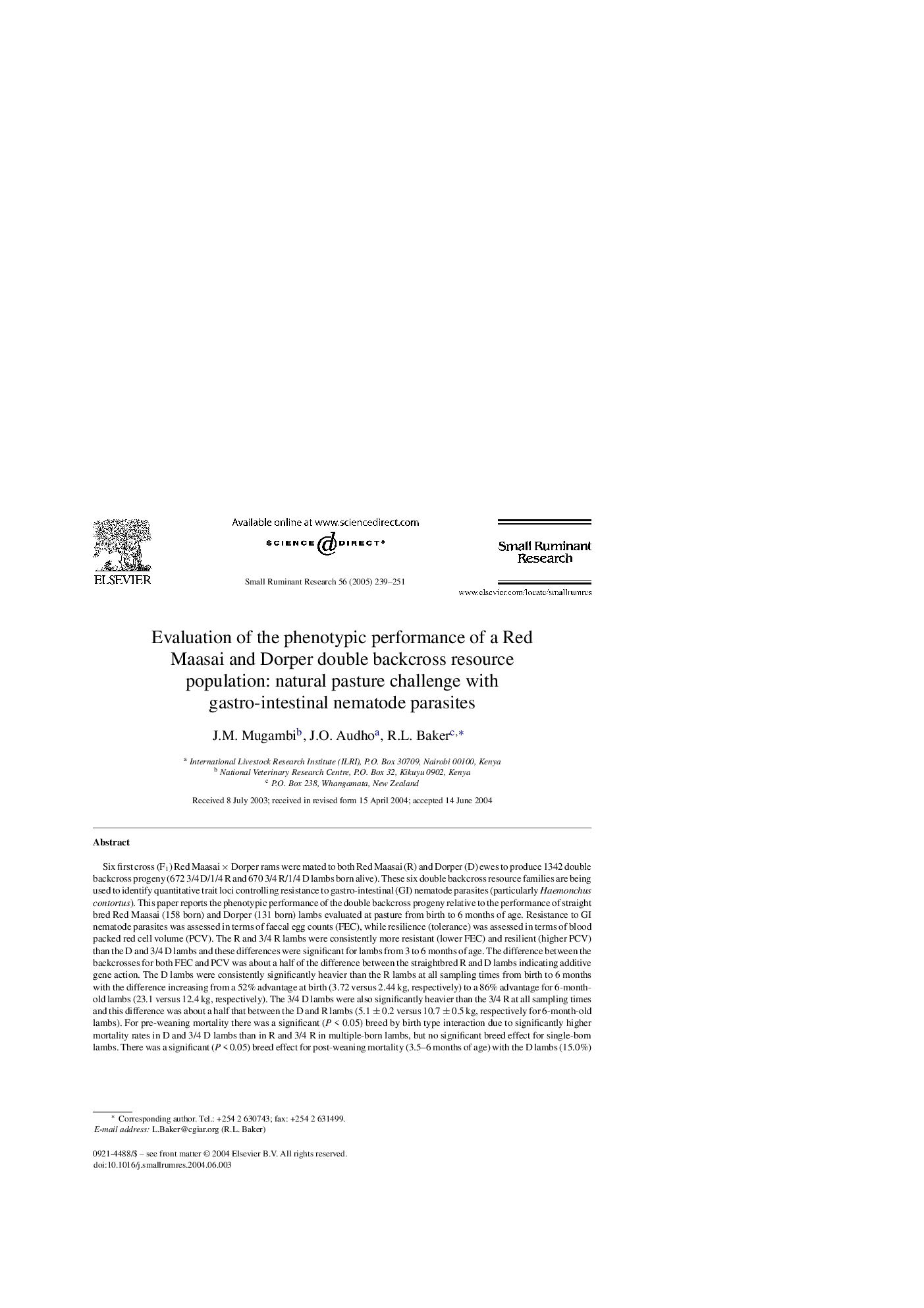| Article ID | Journal | Published Year | Pages | File Type |
|---|---|---|---|---|
| 8986832 | Small Ruminant Research | 2005 | 13 Pages |
Abstract
Six first cross (F1) Red Maasai à Dorper rams were mated to both Red Maasai (R) and Dorper (D) ewes to produce 1342 double backcross progeny (672 3/4 D/1/4 R and 670 3/4 R/1/4 D lambs born alive). These six double backcross resource families are being used to identify quantitative trait loci controlling resistance to gastro-intestinal (GI) nematode parasites (particularly Haemonchus contortus). This paper reports the phenotypic performance of the double backcross progeny relative to the performance of straight bred Red Maasai (158 born) and Dorper (131 born) lambs evaluated at pasture from birth to 6 months of age. Resistance to GI nematode parasites was assessed in terms of faecal egg counts (FEC), while resilience (tolerance) was assessed in terms of blood packed red cell volume (PCV). The R and 3/4 R lambs were consistently more resistant (lower FEC) and resilient (higher PCV) than the D and 3/4 D lambs and these differences were significant for lambs from 3 to 6 months of age. The difference between the backcrosses for both FEC and PCV was about a half of the difference between the straightbred R and D lambs indicating additive gene action. The D lambs were consistently significantly heavier than the R lambs at all sampling times from birth to 6 months with the difference increasing from a 52% advantage at birth (3.72 versus 2.44 kg, respectively) to a 86% advantage for 6-month-old lambs (23.1 versus 12.4 kg, respectively). The 3/4 D lambs were also significantly heavier than the 3/4 R at all sampling times and this difference was about a half that between the D and R lambs (5.1 ± 0.2 versus 10.7 ± 0.5 kg, respectively for 6-month-old lambs). For pre-weaning mortality there was a significant (P < 0.05) breed by birth type interaction due to significantly higher mortality rates in D and 3/4 D lambs than in R and 3/4 R in multiple-born lambs, but no significant breed effect for single-born lambs. There was a significant (P < 0.05) breed effect for post-weaning mortality (3.5-6 months of age) with the D lambs (15.0%) and 3/4 D lambs (7.3%) having higher mortality rates than the 3/4 R and R lambs (0.8 and 1.4%, respectively). Mortality was attributed mainly to starvation/miss-mothering followed by pneumonia during the pre-weaning period and to haemonchosis and pneumonia from weaning to 6 months of age.
Related Topics
Life Sciences
Agricultural and Biological Sciences
Animal Science and Zoology
Authors
J.M. Mugambi, J.O. Audho, R.L. Baker,
